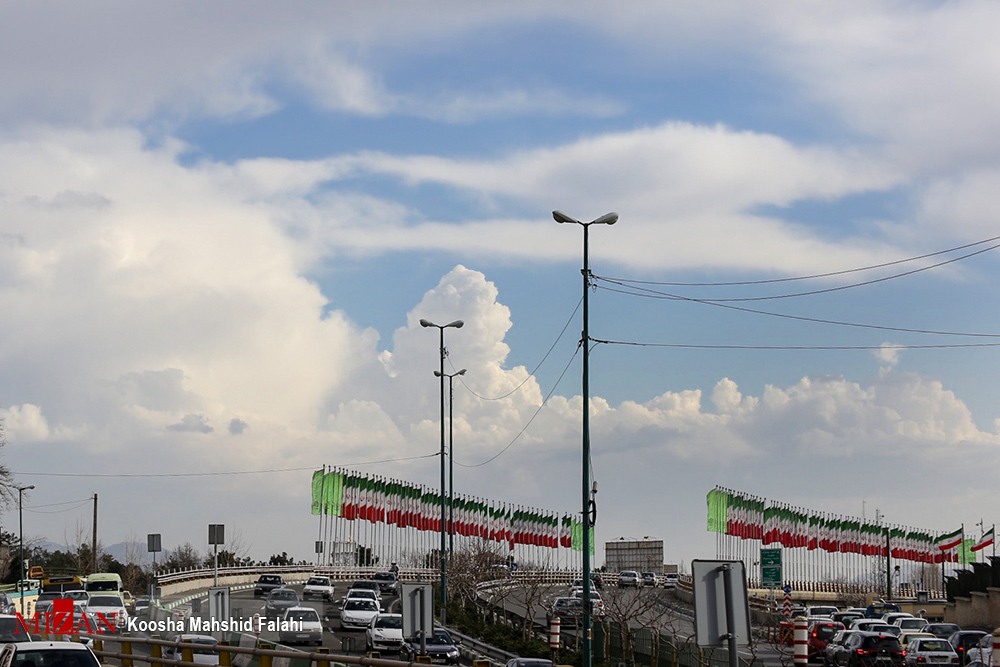The World Bank has downgraded Iran's economic growth estimates and forecasts in a new report.
The report entitled "Reforms and External Imbalances: The Labor-Productivity Connection in MENA (Middle East and North Africa)", put the Islamic Republic's real GDP growth for 2018 at -1.6%.
The World Bank has forecast that the rate will further contract to reach -3.8% in 2019 before an expansion of 0.9% in 2020 and 1% in 2021.
Its previous report entitled "World Economic Prospects", which was published in January, read Iran's GDP was bracing for further contraction in 2019 to reach -3.6% after experiencing an estimated -1.5% in 2018 before stabilizing in the positive territory at 1.1% in 2020 and 2021. The figures in that report for 2018, 2019 and 2020 in turn showed -5.6%, -7.7% and -3.1% changes compared to those of June 2018.
The new report also estimates Iran's real GDP per capita growth stood at -2.6% in 2018. Forecasts for 2019, 2020 and 2021 have been put at -4.8%, 0%, and 0.1% respectively.
It estimates Iran's current account balance at 0.5% of GDP in 2018. Forecasts for 2019, 2020 and 2021 have been put at 0.0%, 0.5% and 0.9% of GDP respectively.
The country's fiscal balance estimate has been put at -4.8% of GDP. Forecasts for 2019, 2020 and 2021 have been put at -5.4%, -5.5% and -5.4% of GDP respectively.
"With oil and gas dominating their exports, MENA oil exporters are expected to grow modestly at 0.9% in 2019, dragged down by the expected contraction in Iran on the back of US sanctions," reads part of the new report.
US President Donald Trump announced on May 8 his withdrawal from the nuclear deal Iran had signed with world powers back in 2015 and rolled out a new sanctions regime against Tehran in the following months.
The first round of renewed US sanctions reimposed on Aug. 7 prohibits Iran's purchase of US dollars and precious metals, part of a larger move that attempts to cut the country off from the international financial system. A second tranche of sanctions on Iran's oil and gas sector took effect on Nov. 4.
Sanctions reimposed by the US on Iran's oil sales have arguably had the most negative impact on the country’s economic growth prospects, as oil and oil-based products have a major part in its gross domestic product.
Iran's real GDP per capita growth stood at -2.6% in 2018. Forecasts for 2019, 2020 and 2021 have been put at -4.8%, 0% and 0.1% respectively
While the United States has set a goal of completely halting Iran’s oil exports, it granted temporary import waivers to China, India, Greece, Italy, Taiwan, Japan, Turkey and South Korea to ensure low oil prices and no disruption to the global oil market, Reuters reported.
The Trump administration is currently in consultations with the importers ahead of a May 2 deadline when the waivers expire.
Analysts believe the administration is likely to extend the waivers to the remaining five importers to placate top buyers China and India and to decrease the chance of oil prices rising higher.
China, India, Japan, South Korea and Turkey are likely to be given waivers that could cap Iran’s crude oil exports at about 1.1 million barrels per day, US-based analysts at Eurasia Group said in January. That would remove Italy, Greece and Taiwan from the waivers list.
IMF Estimates
The International Monetary Fund, in its latest World Economic Outlook, has said it expected Iran's economy to have contracted in 2018 and furthermore in 2019, as a result of the reimposition of US sanctions against the Islamic Republic.
"Prospects for 2018–19 were marked down sharply for Iran, reflecting the impact of the reinstatement of US sanctions," read the IMF report.
"The downward revisions reflect to an important extent the worsening of growth prospects for Iran, following the reimposition of US sanctions. The economy is now forecast to contract in 2018 (-1.5 percent) and especially in 2019 (-3.6 percent) on account of reduced oil production, before returning to modest positive growth in 2020–23."
Growth in Recent Years
Latest data published in Iran about the country's economic growth to date show gross domestic product hit 3,738 trillion rials ($34.35 billion at the exchange rate of 108,800 rials per dollar) during the first half of the current fiscal year (March 21-Oct. 22) to register a 0.4% growth compared with last year's corresponding period.
According to the Statistical Center of Iran, excluding the share of oil sector from GDP, the figure stood at 2,899 trillion rials ($26.64 billion), which indicates a 0.3% growth year-on-year.
The breakdown of GDP for the three economic sectors under SCI review shows only the services sector experienced growth with 2.3%. The two other sectors of agriculture and industry saw contractions of 2.5% and 1.2% respectively.
Iran’s economy emerged from recession in the fiscal 2014-15 with a 3% growth after two years of recession when the economy contracted 5.8% and 1.9% back to back, the Central Bank of Iran reported.
SCI and CBI both release periodic reports on Iran's macroeconomic data. The results, however, often differ from each other due to different methods used in calculations.
Growth in 2015-16 has been put at -1.6% by CBI and 0.9% by SCI.
CBI had put 2016-17 growth at 12.5% while SCI says it was much lower and near 8.3%.
The World Bank says the GDP grew by 13.4% and 3.8% respectively in 2016 and 2017.


